As an EV and Tesla enthusiast who’s crossed Canada multiple times, I’ve experienced firsthand the differences in EV charging infrastructure across provinces. As I have found, EV charging, adaptability, and overall acceptance in Canada varies province to province. Some have seamless and affordable charging options along major routes, while others test your patience and planning.
Whether you’re an EV driver considering a cross Canada trip or just curious about electric vehicles in Canada, this guide shares my personal insights. I’ll rank provinces by EV-friendliness, highlighting where charging can be challenging, and provide tips on finding chargers, plus practical info along the way.
1) Quebec: A Model Province for EV Charging in Canada

When it comes to electric vehicles in Canada, Quebec is arguably the most EV-friendly province. Thanks to Quebec Hydro’s affordable rates and the province’s commitment to expanding its charging infrastructure, Quebec has become a haven for EV drivers.
Le Circuit électrique (The Electric Circuit) network—backed by Hydro-Québec—boasts over 6,500 public charging stations across the province (over 1,000 fast chargers!) making it one of the most accessible and affordable networks for EVs in the country.
Thanks to green initiatives and rebates, Quebec also has the highest concentration of electric vehicles in Canada, accounting for over 50% of the country’s EVs according to S&P Global.
My Personal Experience Driving in Quebec
Quebec was my first experience charging an EV. In 2020, I picked up my first Tesla Model Y in Quebec City and did an incredible tour of the Gaspe Peninsula before heading west and back home to British Columbia.
This detour took me off the Tesla Supercharger network immediately which might cause some anxiety for most Tesla owners driving the car for the first time. This speaks to how well equipped the province is and why it tops my list for EV charging in Canada.
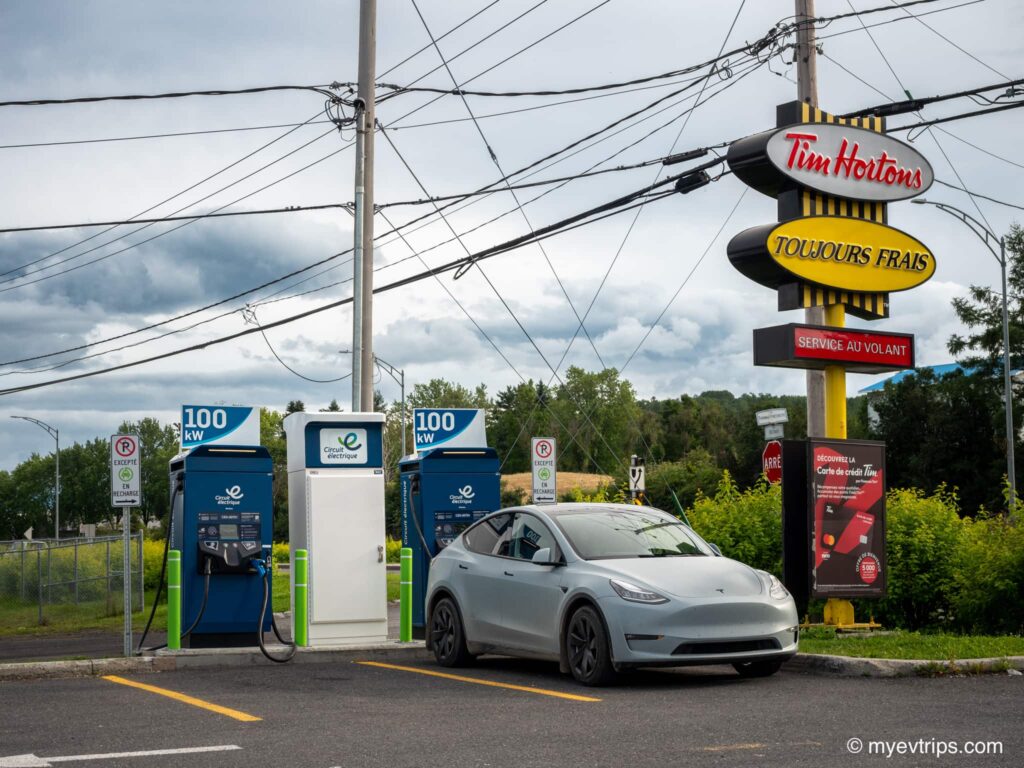

The density of chargers along the main highways and the abundance of charging options near tourist attractions and at hotels, like the Hotel Château Laurier in Quebec City, set high standards. Quebec’s network is strong not only along major routes but also in more remote areas, such as the Gaspé Peninsula and the north shore of the St. Lawrence.
Quebec EV Charging Tips
While exploring Quebec, especially during my road trip along the Côte-Nord, I found it easy to find chargers at local hotels, including smaller places where Level 2 charging is more common.
Although all chargers I used were listed on Plugshare, I recommend downloading Le Circuit électrique app as well as caring a physical RFID card for Flo or ChargePoint as some locations may have poor cell service.
2) British Columbia: Second on the List of EV Canada Friendliness

British Columbia is my home province and is a close second for EV charging and friendliness in Canada. BC has been at the forefront of green energy, with BC Hydro supporting an extensive network of fast chargers along major highways. As of late 2024, BC Hydro completed its fast charging network expansion, making it possible to reach all corners of the province and drive from the U.S. border up to northern BC.
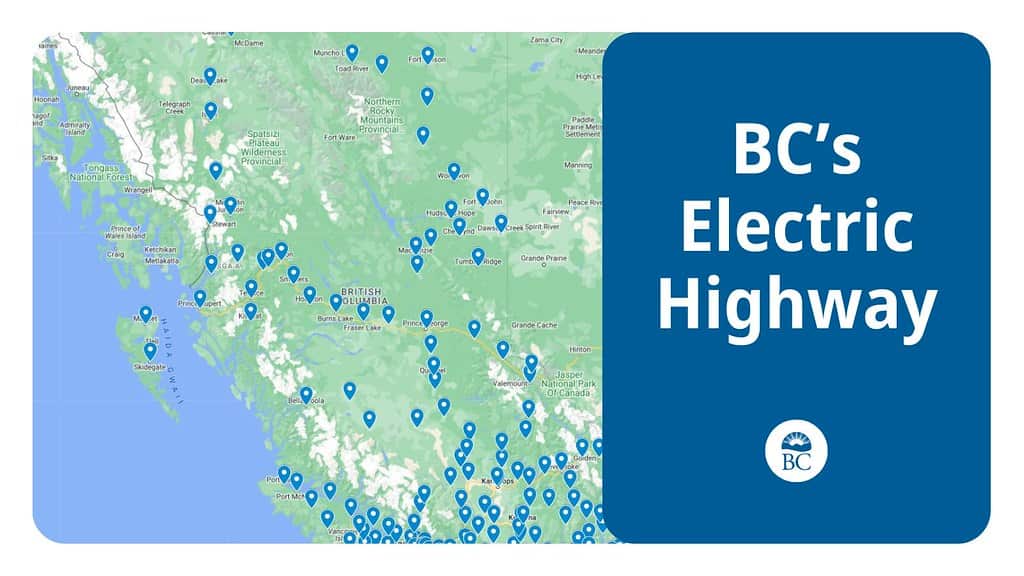
The province’s diverse landscapes—from the coastal routes to Vancouver Island to the mountainous roads of the Kootenays—are well-serviced with both Tesla Superchargers and BC Hydro fast chargers. As of posting this, BC boasts over 5,000 EV charging stations.
BC is third in electric vehicle Canada registrations with just over 20% of the country’s share. That said, if you drive in Vancouver seemingly every 5th car on the road is an EV.
My Personal Experience Driving in BC

As a resident of BC, I’ve explored much of the province in my EV, from Tofino on Vancouver Island to Jasper via the Highway 1 corridor. The BC Hydro fast chargers and Tesla Superchargers along major routes allow seamless travel, although remote regions like northern BC still require planning.
BC Hydro’s completion of its EV infrastructure along the Alaska Highway this year has made driving northward, and even into the Yukon, much easier. I had a lenghty plan to make that trip earlier in the summer but got postponed. Now this Yukon EV road trip is much easier and faster thanks to the new infrastructure.
BC EV Charging Tips
Many hotels and tourist destinations offer complimentary Level 2 charging, and BC Hydro’s network covers major routes effectively. This has allowed me to make last-minute trips, even in busy summer months, with confidence in the charging availability.
Similar to Quebec’s Circuit électrique, BC Hydro has a great EV charging app and map that makes navigating the province easier.
3) Newfoundland and Labrador: Surprisingly EV-Friendly
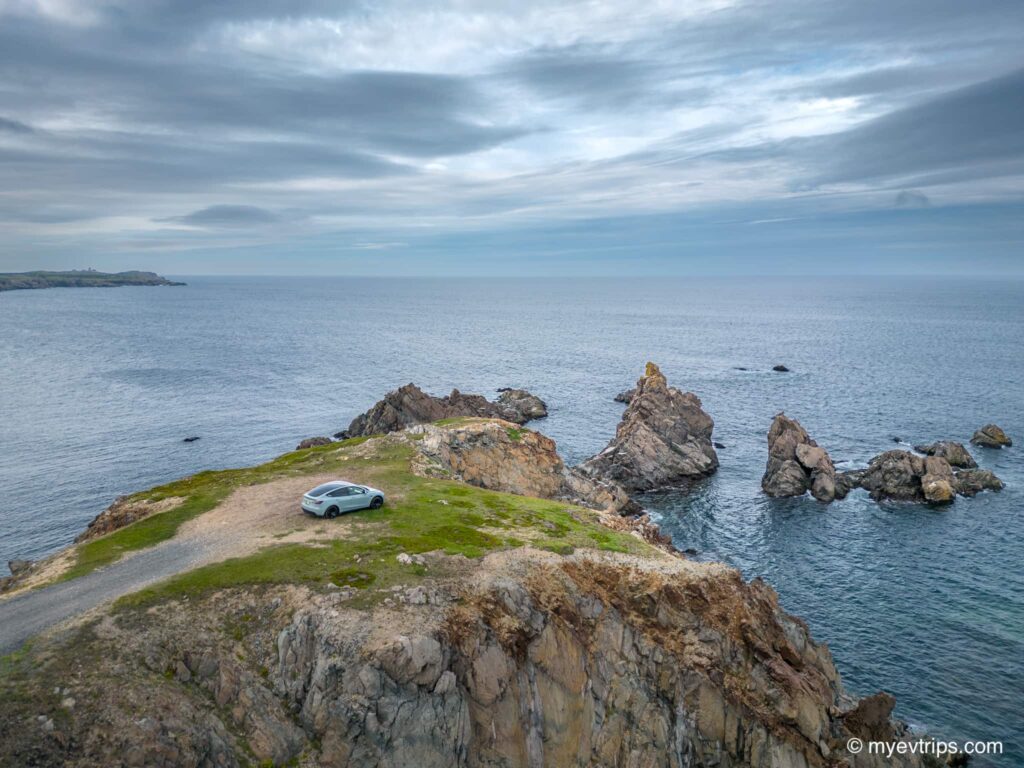
While Newfoundland may not be the first province that comes to mind for electric vehicles in Canada or EV infrastructure, it ranks surprisingly high on my list. Newfoundland Hydro has developed a network of fast chargers on Newfoundland along major routes, allowing for an accessible EV road trip from coast-to-coast on Newfoundland and even to the far north tip.
That said, most locations only have one or two fast chargers, making waits common during the busy summer months.
My Personal Experience Driving in Newfoundland
I ventured across Newfoundland all the way to Saint Pierre, France (yes, that’s France!) and up to L’Anse aux Meadows, where Vikings first landed in North America. The latter was an impromptu trip where I made zero plans to add this 879 km detour. This last minute decision speaks volumes to my trust in Newfoundland Hydro’s reliable network, even in remote places.
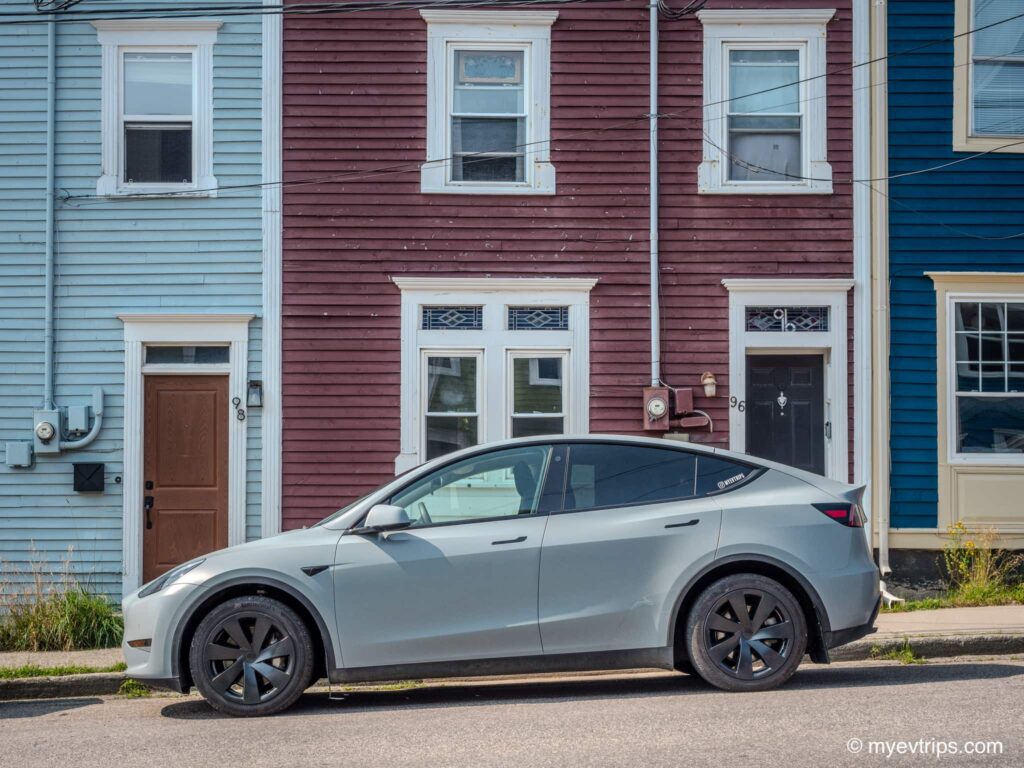
Newfoundland’s charging setup impressed me enough to consider it one of the top provinces for EV travel, even though it lacks the quantity of chargers seen in other regions. My 10-day Newfoundland road trip stands as one of my favourites to date.
I should note, I did not drive in Labrador but do see that there are chargers along 500 highway, connecting Labrador City with Happy Valley-Goose Bay.
Newfoundland EV Charging Tips
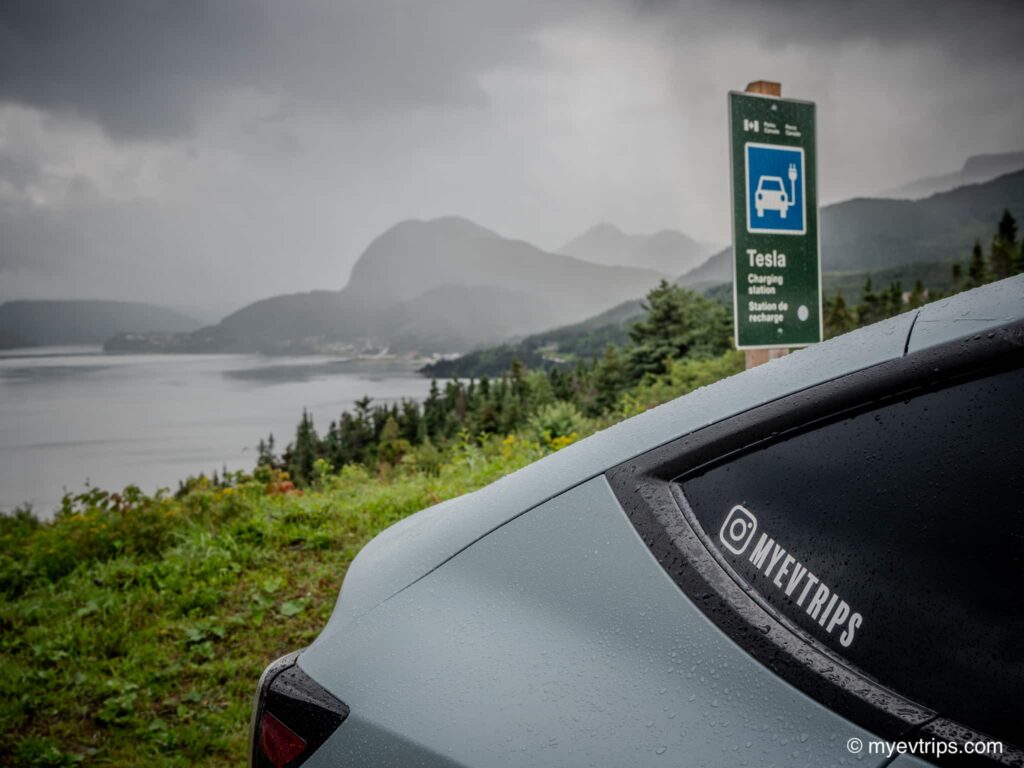
Plan ahead if you’re traveling during peak season, as waits can be expected at some stops due to limited chargers. That said, I travelled across the island in the fall and only experienced one wait on my entire trip.
4) Ontario: Extensive but Inconsistent Charging
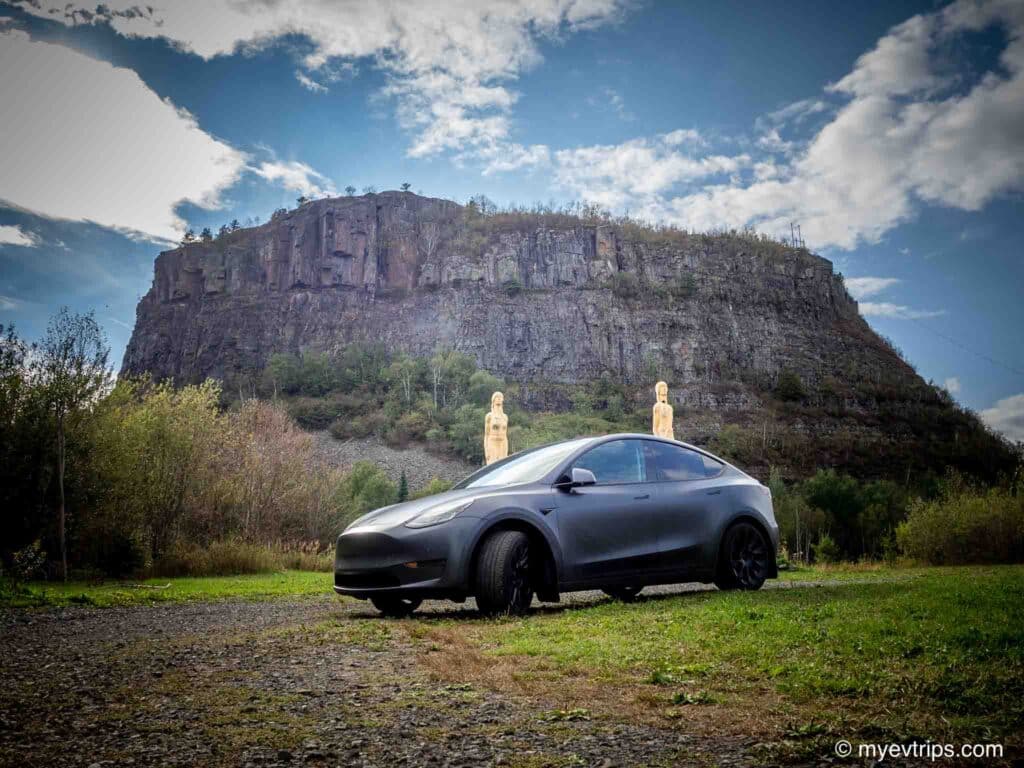
Ontario is home to the largest population and the most urbanized infrastructure, which benefits EV drivers. The province accounts for 22.5% of the electric vehicles in Canada, second behind Quebec. The availability of Tesla Superchargers is excellent, and networks like Ivy Charging Network and ChargePoint add to the options, but Ontario’s vast size and inconsistent charger availability can make it a challenge, especially in northern areas.
My Personal Experience Driving in Ontario
I’ve driven across Ontario multiple times, from the Toronto-Ottawa corridor to the more remote Toronto-Thunder Bay route. While I typically rely on Tesla’s Superchargers in the province, third-party chargers were more hit-or-miss for me.
Ivy stations work well, but finding them outside major cities can be challenging. I did notice more of them at highway rest stops (all 20 ONroute locations) on my most recent trip to Ontario so things are trending in the right direction.

Then there was the time where I was stranded in Blind River for the day due to a power outage in the area. My uncle in Sudbury would later tell me the outages in the area are not uncommon which was a bit shocking. That said, gas stations were also shut down durring the outage so this challenge isn’t limited to electric vehicles in Canada.
Ontario EV Charging Tips

While the southern half of Ontario is well-covered, northern routes may require extra planning and patience. For scenic trips, leveraging both Superchargers, public L2 chargers at hotels, and even camping at provincial or national parks can help break up the journey.
5) Prince Edward Island: Small but Efficient
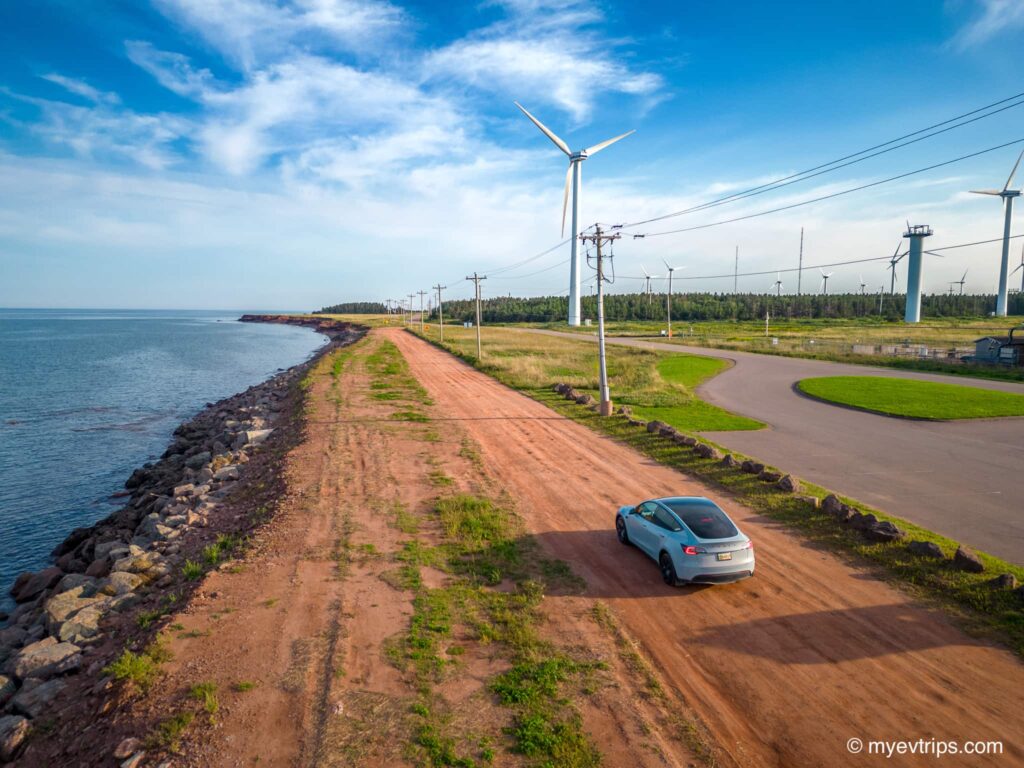
Given that Prince Edward Island is Canada’s smallest province, EV travel is unsurprisingly easy. While PEI doesn’t have a huge number of chargers, it’s small enough that the current infrastructure works. The island benefits from Parks Canada’s chargers, which are both free and plentiful (18), making visiting the island’s most popular sites especially easy.
My Personal Experience Driving in PEI

Exploring PEI in my EV was a breeze, with charging available in Charlottetown and several smaller towns. I covered the island from tip-to-tip and found chargers at natioanl parks and some golf courses along the way. Even when accommodations didn’t have EV chargers, like the iconic West Point Lighthouse, I was able to charge overnight on a standard 15-amp circuit.
That said, quantity is a problem. The local government has committed to times this by four so they are heading in the right direction and the fedarl goverment has already invested $1.4 million to build 27 fast chargers across the province by September 2025.
PEI EV Charging Tip

Don’t expect a robust network of fast chargers, but Level 2 chargers are widely available. PEI’s size means you’re never far from a charger, and its compact layout allows for easy exploration.
Make use of the free L2 chargers at the national parks while you explore then. For Tesla owners, a centrally located Tesla Supercharger helps cover most of PEI, allowing you to see it all without range anxiety.
6) Nova Scotia: Limited Infrastructure but Strategic Locations
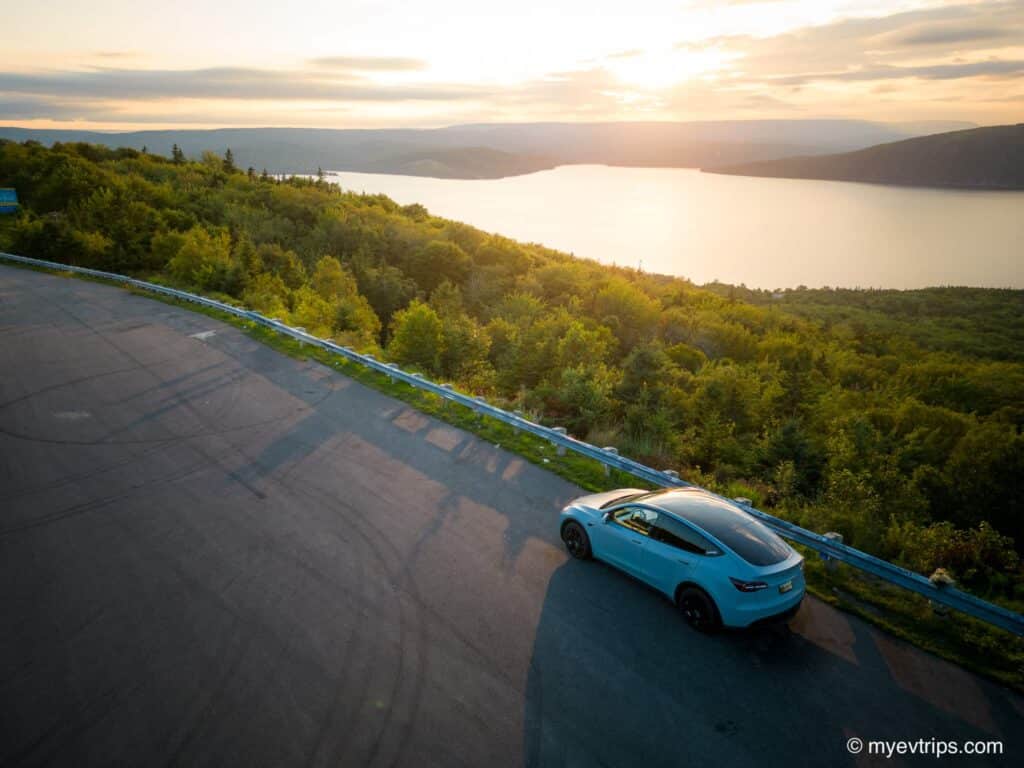
Similar to PEI, Nova Scotia’s charging infrastructure is limited but doesn’t benifit from a small footprint. That said, Parks Canada and private businesses are filling in the gaps, especially on Cape Breton Island. Tesla Superchargers and Level 2 chargers are available, but careful planning is essential.
My Personal Experience Driving in Nova Scotia
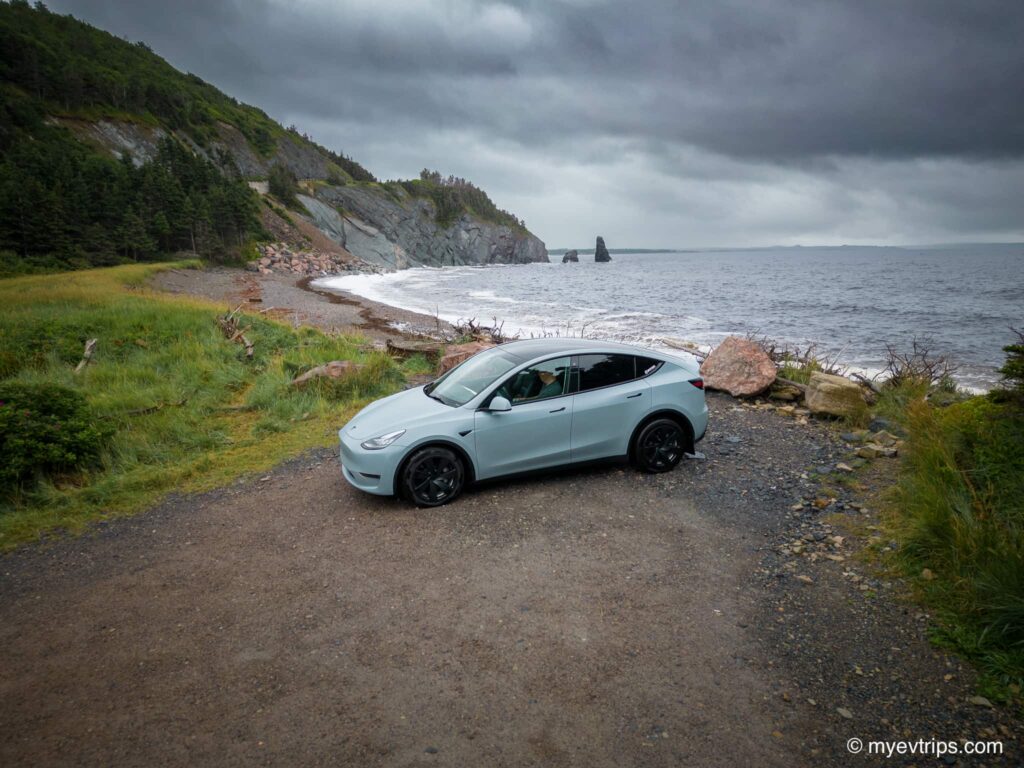
While on an EV road trip around Cape Breton Island, I found I had to plan more carefully, especially with limited fast chargers getting there. However, Level 2 chargers in Parks Canada sites and at hotels and golf courses, like the amazing Cabot Cape Breton, made the trip easily manageable. Nova Scotia’s charging network has improved over time, but more rural areas require advance planning.
Nova Scotia EV Charging Tips
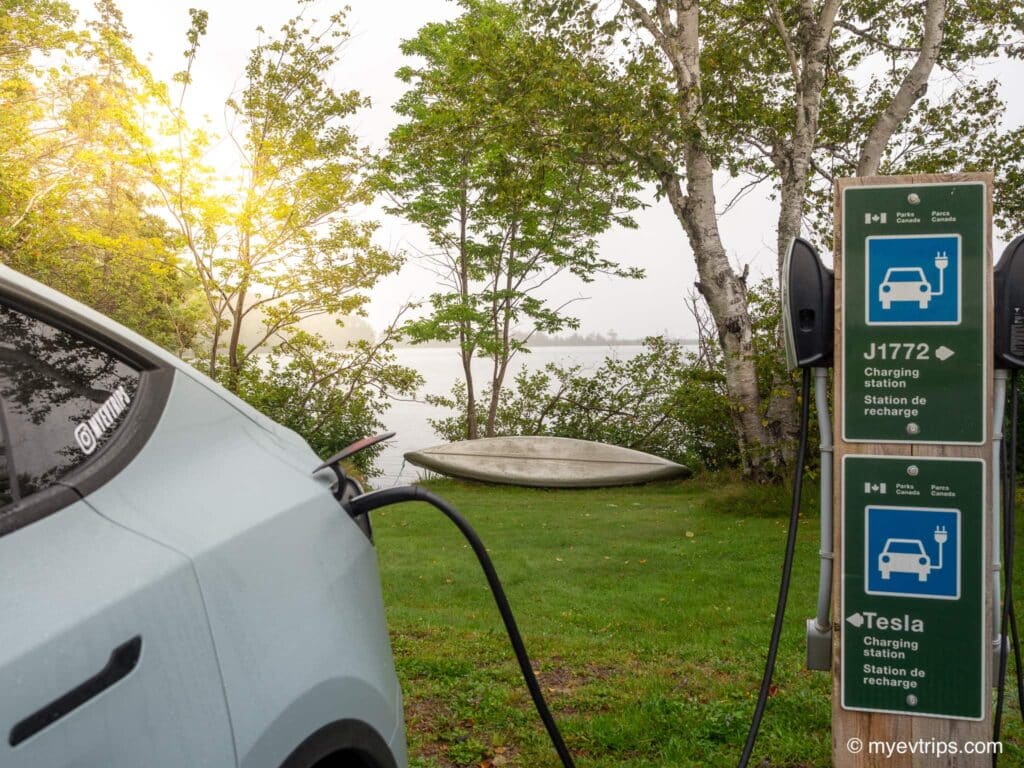
Expect Level 2 charging to be more readily available than fast charging. If you’re traveling the Cabot Trail, map out your charging stops getting to the island ahead of time to avoid unexpected delays.
7) New Brunswick: Compact but Practical
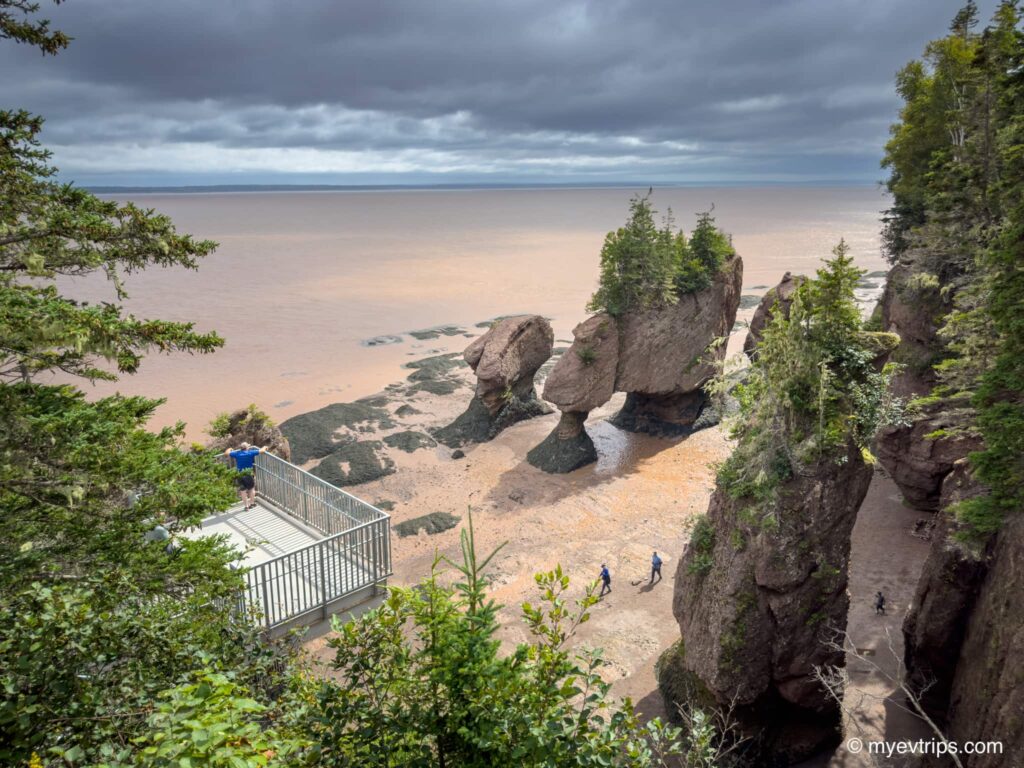
New Brunswick is another small province but suffers from lack of chargers. In 2023 there were just 80 NB Power L2 chargers in the province. Fast chargers are even are less common. That said, Level 2 options are available at key destinations making it easy to tour the province with some planning.
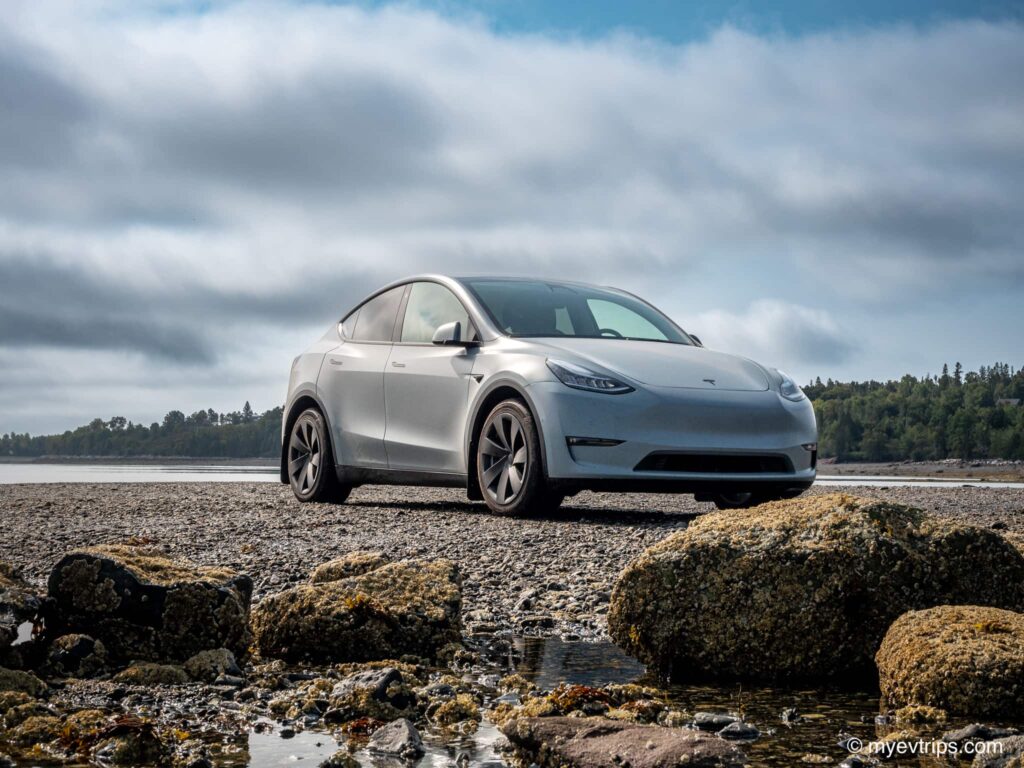
My Personal Experience Driving in New Brunswick
While visiting the Hopewell Rocks, I appreciated the Level 2 charger available at the site, which let me top up while exploring the mind blowing low tides. Hotels in Saint John, Moncton, and Saint Andrews also offered charging, and my EV road trip to Ministers Island was possible thanks to free charging at the incredible Algonquin Resort. New Brunswick’s network may be modest, but it’s convenient for local exploration.

New Brunswick EV Charging Tips
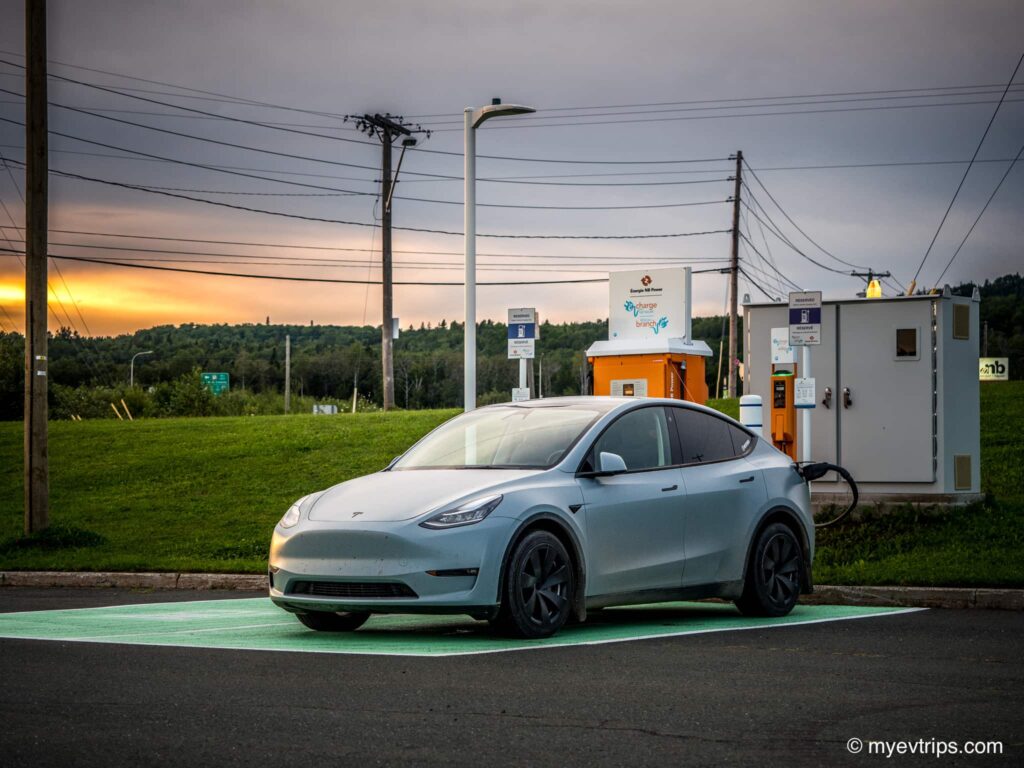
For short visits, New Brunswick is well-covered by Level 2 chargers at popular tourist sites. Fast chargers are sparse, but thoughtful planning makes for a comfortable EV road trip.
The Prairie Provinces: Challenges and Opportunities
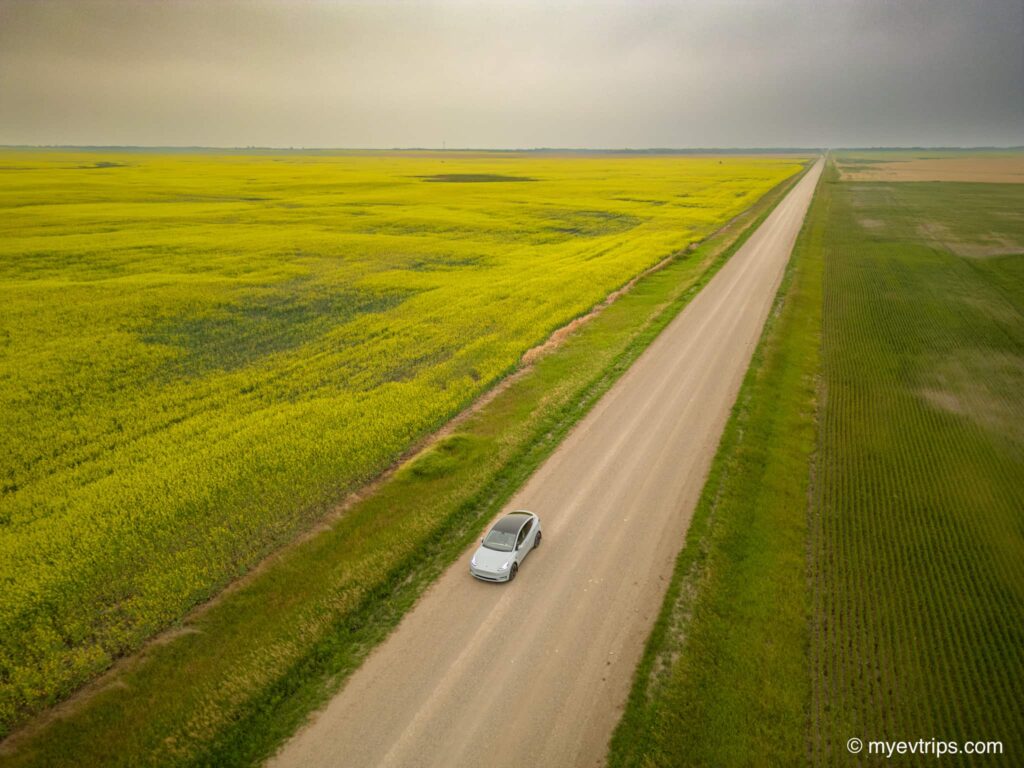
The prairie provinces have made strides in EV infrastructure, but they have a long way to go, especially when it comes to accommodating travelers. I had some of my most frustrating charging experiences and encountered my share of anti-EV individuals and pushback in these regions. Alberta, in particular, has had challenges with EV vandalism, making it less welcoming for EV drivers.
8) Manitoba: Best of the Prairies?

Manitoba has a good number of Tesla Superchargers along the Trans-Canada Highway and a few hotels with charging. It’s feasible to get around with limited planning in the southern half of the province but exploring beyond that would be a challenge.
My Personal Experience Driving in Manitoba
During one of my EV road trips, I stayed at a few hotels with dedicated EV chargers in Winnipeg and noticed an increasing acceptance of EV travel here. That said, the Mere Hotel had a badly damaged charger (although it worked) and the Hilton Airport hotel charger was non-operational.


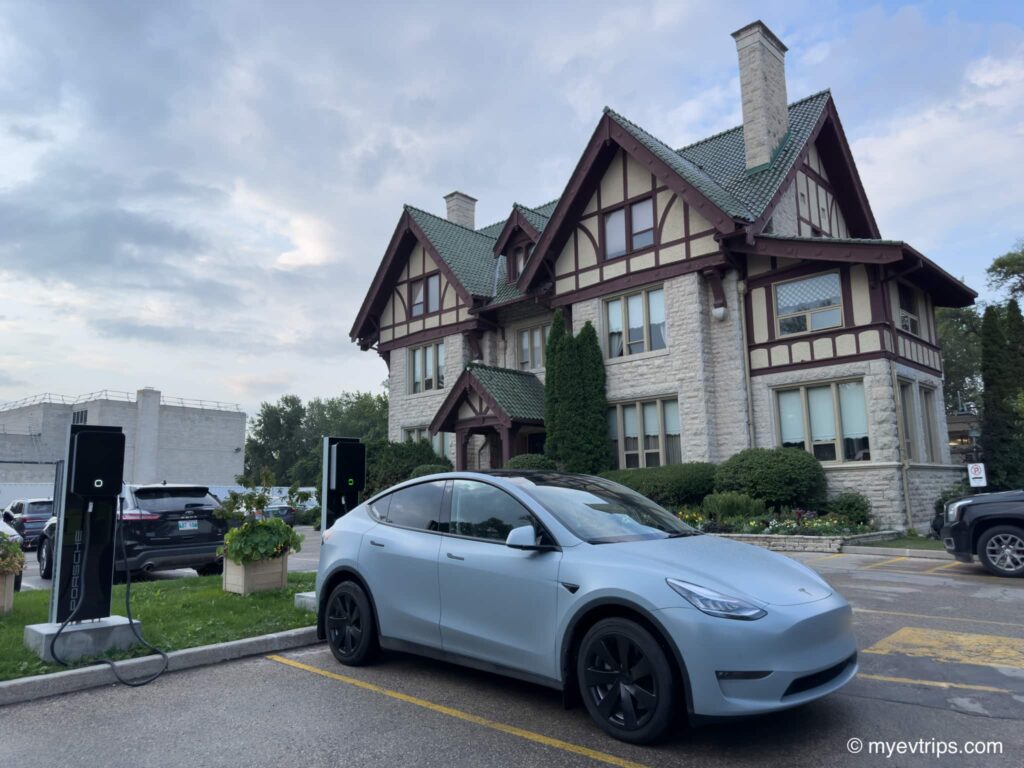
Although it’s challenging to go off the main highway, locations like Riding Mountain National Park provided charging amenities, making it possible to explore some natural beauty within the province including a unique road trip through a bison sanctuary.
READ MORE: Despite what the CBC says, a Manitoba to Minnesota EV road trip is possible.

9) Saskatchewan: Sparse Coverage and Unique Challenges

Similar to Manitoba, Saskatchewan’s charging infrastructure is relatively sparse, with most stations located in the southern part of the province along the Trans-Canada. I haven’t ventured too far off of the Yellow Head or the Trans Canada Highway. Unfortunately, my experience in Saskatchewan was often hampered by issues with non-EV drivers.
My Driving Experience in Saskatchewan

I have stayed at the Delta Hotel in downtown Regina multiple times thanks to their free EV charging, but navigating outside main routes was challenging.
I encountered an instance of harassment from an ICE truck driver where he repeatedly cut me off on the highway and braked which added a layer of frustration to my EV travel in this province. I also had a lengthy conversation while charging with an anti-EV individual who was throwing wrong facts at me.
In North Battleford, I had another EV driver unplug my car while topping up and, after getting the Alt Hotel staff in Saskatoon to contact the driver blocking their EV charger, I received an ear full for my “entitlement.” Sigh.
10) Alberta: Plenty of Chargers, But a Hostile Environment

Alberta has more chargers compared to its Prairie neighbours, but it also poses some of the most hostile experiences for EV drivers. From vandalized charging stations to regular instances of road aggression and coal rolling, Alberta’s oil-rich culture has made EV travel a challenge here.
The charging infrastructure is spotty but options are available in most cities. That said, there are large gaps getting to some of the more remote cities where these chargers are located so planning is crucial. Also, Calgary is pretty barren for fast chargers given its size. I have had to go out of my way several times to top up in Cow Town.
My Experience Driving in Alberta
Despite years of living in Edmonton, I was taken aback by the negative reception to EVs. I had to deal with cut charging cables and, on several occasions, drivers giving rude gestures simply for driving a Tesla.
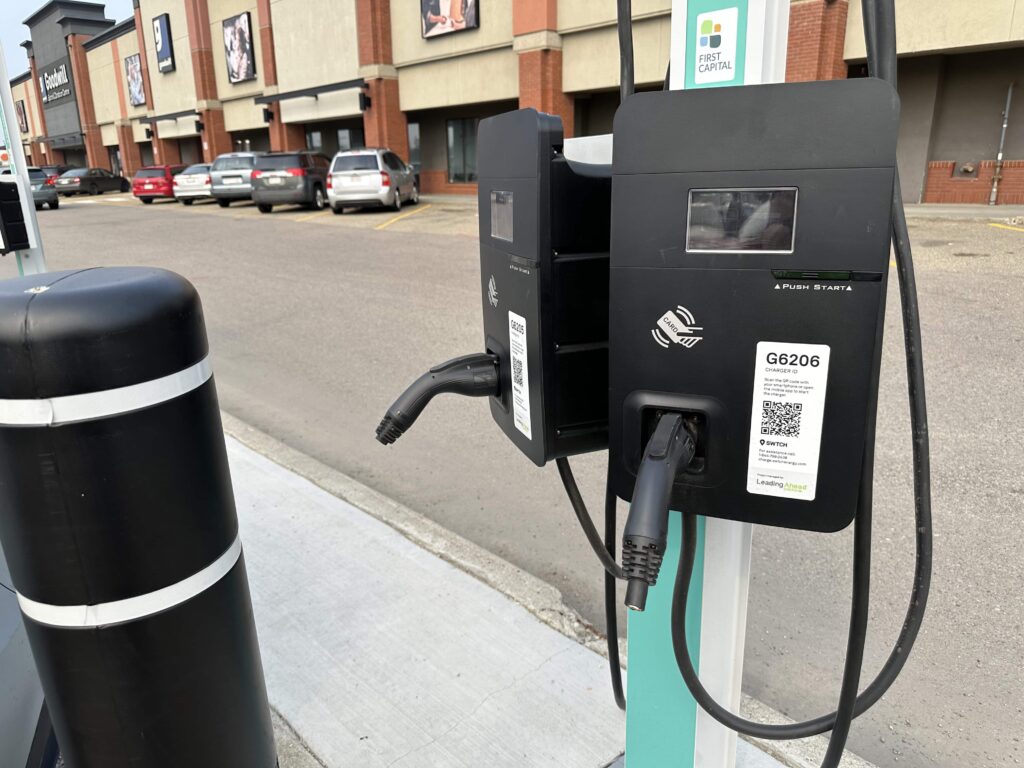
A memorable instance involved a driver getting visibly irritated as I demonstrated my car’s self-parking feature to my spouse for the first time in Calgary. It had zero impact on him but he still felt it was acceptable to roll down his window to call me a “Tesla douchebag” before flipping me off and driving off.
This attitude has become acceptable there and seems to be propagated by right wing anti EV talking points. Even a close friend of mine joked that he tells his kids that Teslas are “Trash-las.” When I asked him why, he just shrugged his shoulders. I’m not sure how things get better when this attitude is being passed on to the next generation.
Despite all of that, I have had some amazing trips in and around Alberta. The Ice Field Parkway is one of my favourite road trips to do and have tackled it in an EV twice now.
The Territories: Exciting Future for EV Explorers
Not to be left out, let’s quickly talk about the two Territories you can drive to. While the territories are not yet ideal for EVs, the Yukon and Northwest Territories are making strides with planned infrastructure projects.
EV Infrastructure in The Yukon
The Yukon has been a surprise leader of EV infrastructure and is improving, with fast chargers installed along major routes for several years now. There are 18 locations across the region, all L3 chargers.
That said, getting to the Yukon has been a challenge, or at least up until the fall of 2024. With BC Hydro’s network to the north is fully complete, exploring the Yukon by EV will be much easier. I look forward to tackling an EV road trip to the Yukon and beyond soon.
EV Infrastructure in The Northwest Territories

Yellowknife, where I was born and raised, has a few chargers, including two Flo fast chargers, which makes it a possible future EV destination.
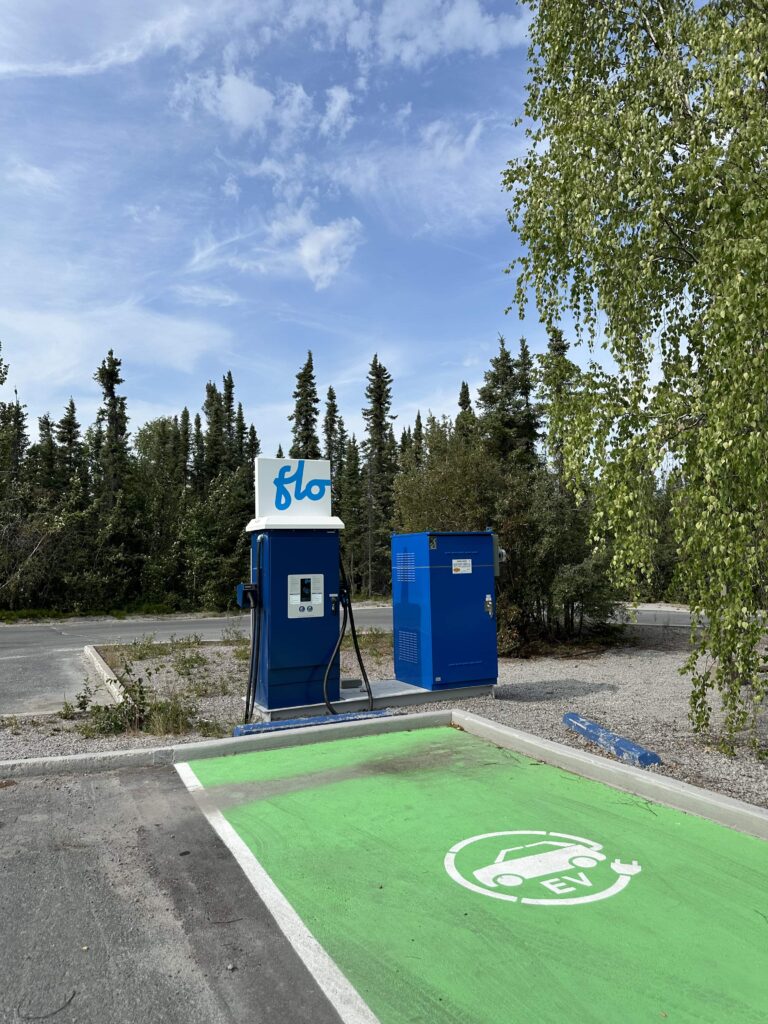
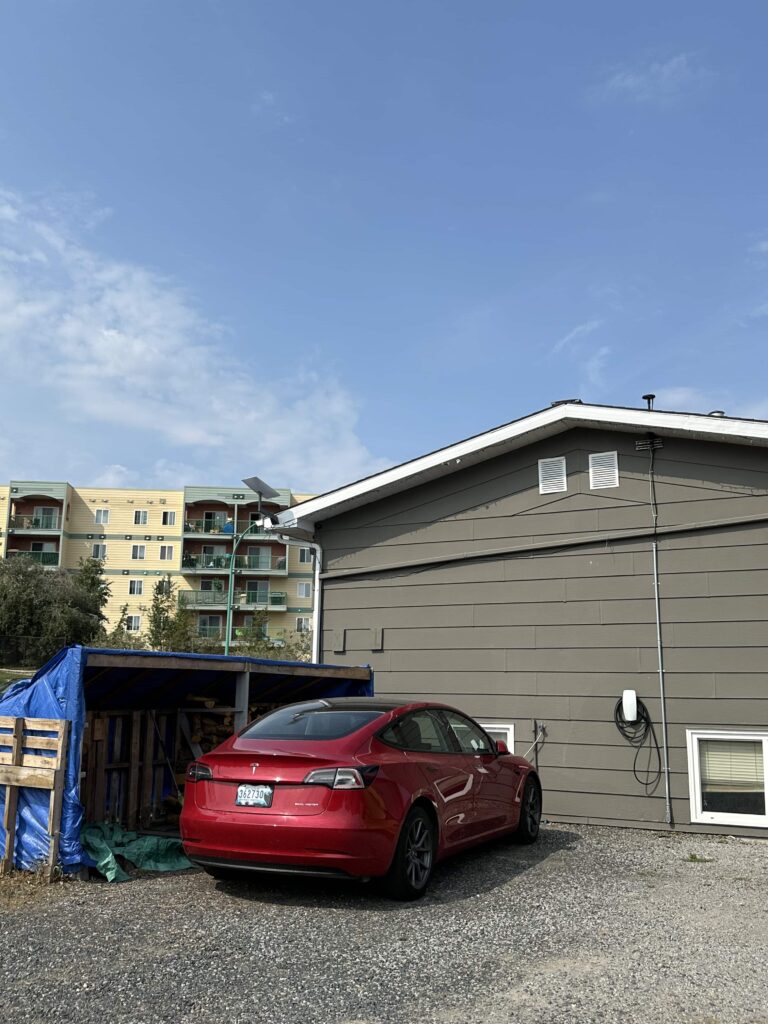
I’m excited about the NWT’s government-funded initiative to connect Yellowknife to Alberta with fast chargers by the end of 2024. Once this network is complete, I’ll finally be able to drive my EV there, which just seems wild to me. I remember driving the 17-hour stretch with my father as a kid and it was always an adventure.
Experiencing Canada in an EV Varies
There you have it—a cross-country ranking of the best provinces and territories for electric vehicles in Canada.
While Canada’s EV infrastructure is steadily improving, there are distinct differences from one province to another. Quebec and British Columbia shine with strong networks and affordability, while Alberta and the Prairies still present challenges…and assholes.
Which province ranks best for EV drivers in your opinion? Do you have a positive or negative electric vehicle Canada story to share? Let me know in the comments below!
SAVE ON A NEW TESLA!
Thinking of buying a Tesla? Use this referral link to get up to $1,300 off!*
*As of August 2024, Tesla has reinstated its referral program and introduced attractive financing options!
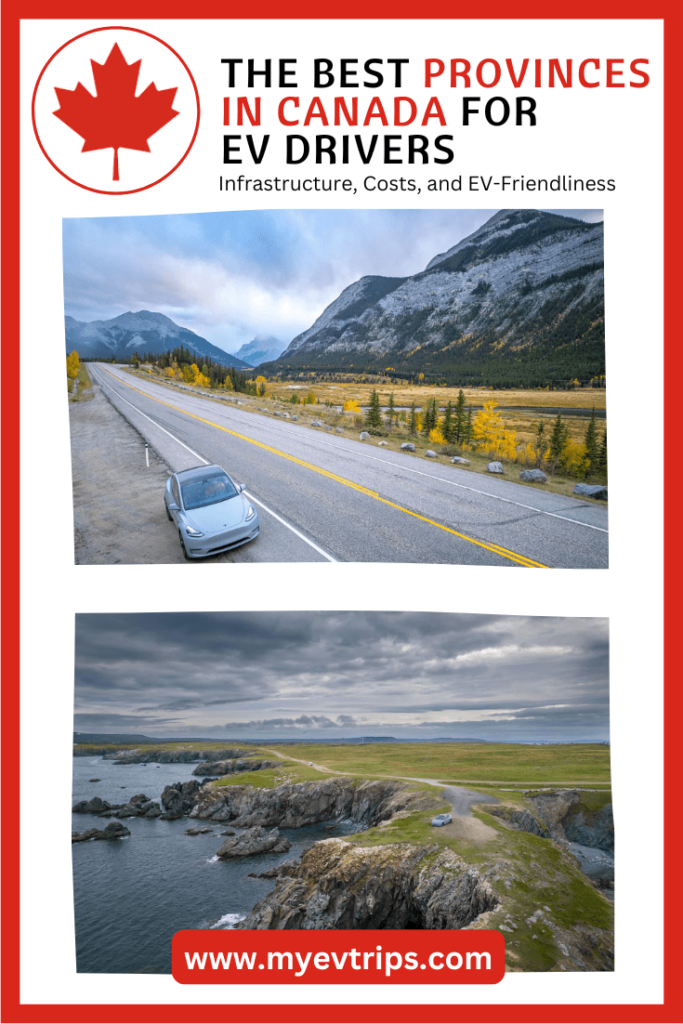

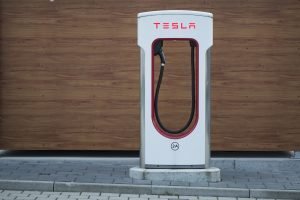

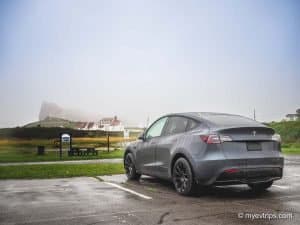
As a Yukon EV driver I can attest to the power of EV-friendly culture. We have had our DCFCs throughout the territory for years now, and their availability was a big factor in my own decision to buy a Mach-E a few years ago.
In that time I’ve made several long road trips, and I was proud to be the first driver to do an “EV speed-run” from Whitehorse to Vancouver in September to attend the Everything Electric expo there.
Amazing and great to hear! I would love to connect about your speed run for an interview if interested!